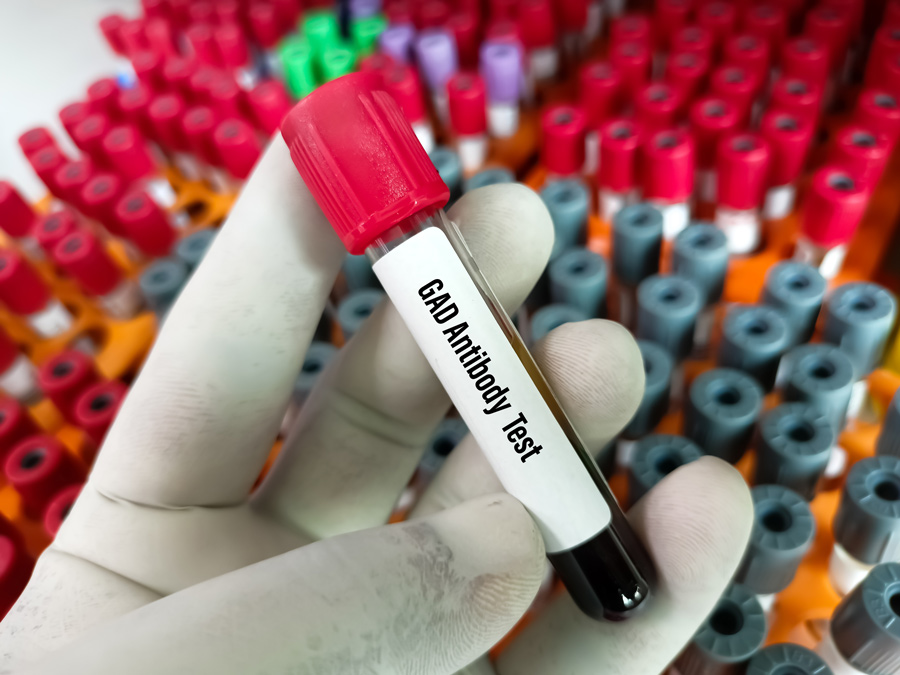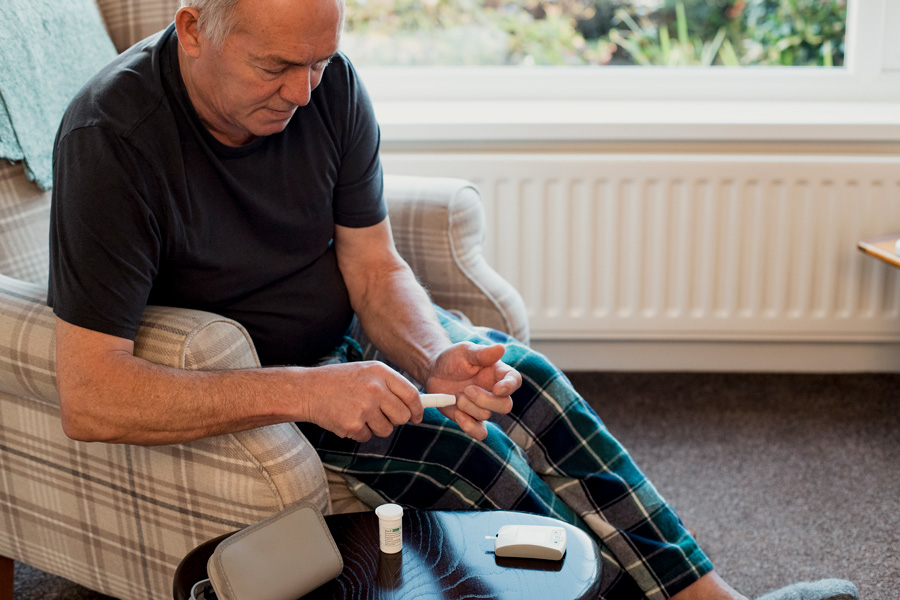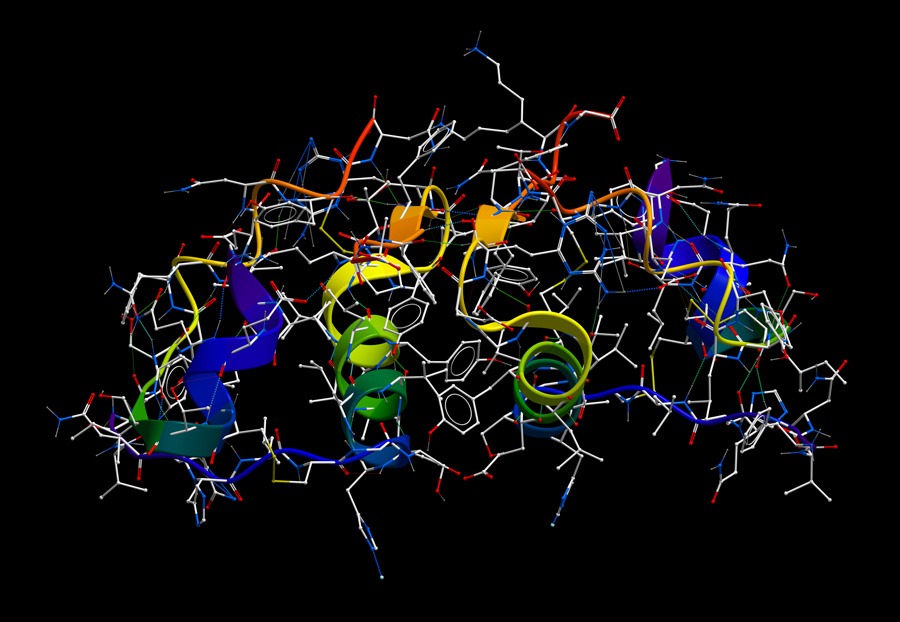A new method to predict adult-onset type 1 diabetes
Adult-onset type 1 diabetes is an autoimmune disease often mistaken for type 2 diabetes. Distinguishing adult-onset type 1 diabetes from type 2 diabetes is vital so that appropriate treatment can begin immediately. This is mainly achieved by identification of GADA, an islet autoantibody found in patients with adult-onset type 1 diabetes. A radio-binding assay is currently used for GADA detection, but its clinical value is questionable. Dr Liping Yu and colleagues from the University of Colorado School of Medicine have validated a new method. More efficient at detecting disease-causing GADA autoantibodies, their method better predicts patients with adult-onset type 1 diabetes requiring early insulin treatment.
Type 1 diabetes is a chronic autoimmune disease which affects a person’s ability to produce insulin and control blood glucose levels. Although type 1 diabetes is most often diagnosed in childhood, it can also arise later in life, where it is known as adult-onset type 1 diabetes, or latent autoimmune diabetes (LADA).
Type 1 diabetes is caused by the destruction of insulin-producing beta cells that reside within the pancreas by our own body’s immune system. Islet autoantibodies (IAbs) appearing in our blood circulation are reliable biomarkers for this autoimmune process in type 1 diabetes.

Important biomarkers
IAbs are the best clinical biomarkers for adult-onset type 1 diabetes to differentiate between adult-onset type 1 diabetes and type 2 diabetes. As people with type 2 diabetes often do not require insulin, avoiding misdiagnosis is crucial. Glutamic acid decarboxylase (GAD) 65 autoantibodies (GADA) are the most common IAbs screened for, since they are often the only diabetes-associated autoantibodies in adult-onset type 1 diabetes.
Current clinical diagnosis
Radio-binding assays (RBA) are the standard detection method for measuring levels of GADA for predicting adult-onset type 1 diabetes. These RBA-GADA use radioactive tracers that bind to the GADA. If GADA are present in a patient’s sample, a positive result is identified by a radioactive signal measured in the sample, and the level of radioactivity is proportional to the amount of antibody present.
Not only is the ECL-GADA assay low-cost and non-radioactive, it detects clinically-relevant high-affinity binding GADA and other islet autoantibodies.
Unfortunately, RBA-GADA generates a lot of biologically false positives, or ‘low-disease risk GADA’, due to its inability to distinguish between high- and low-affinity binding GADA. This is important for screening since low-disease risk autoantibodies can be present in the patient’s blood but are not associated with type 1 diabetes. Although RBA-GADA demonstrates high specificity to detect autoantibodies (98–99%) biochemically, in terms of disease, the overall accuracy of clinical diagnosis is problematic due to large proportion of low-affinity GADA generated.

A new tool
To overcome these shortfalls in GADA screening, Dr Yu and colleagues from the University of Colorado School of Medicine have developed and extensively validated a non-radioactive electrochemiluminescence (ECL) assay to accurately screen for adult-onset type 1 diabetes. Their ECL assay has been shown to be as sensitive as RBA but importantly, it possesses a higher-affinity autoantibody detection of GADA, effectively removing low-affinity signals (false positives). In their study, 2,834 patient serum samples were obtained from two patient groups that had been enrolled in larger clinical studies: Action LADA in the UK (aged 30–70 years), and DiYA in the USA (aged 20–45 years). In both studies, individuals were diagnosed with adult-onset diabetes within five years, and some had early insulin therapy.
In the Action LADA study, 278 patients were positive for RBA-GADA with or without other autoantibodies, including insulinoma-associated antigen 2 (IA-2A) or zinc transporter-8 autoantibodies (ZnT8A), and 493 patients were negative. In the DiYA study, 125 individuals were positive for RBA-GADA with or without other autoantibodies, and 1,938 patients were negative. RBA for GADA, IA-2A, and ZnT8A were performed on all the clinical study samples.
GADA is the dominant autoantibody in adult-onset diabetes
Of the total adult-onset diabetes patients, 9.7% tested positive for IAbs (Action LADA study) and 6.6% IAbs positive (DiYA study). In both groups, RBA-GADA was the most dominant and prevalent IAb, seen over 90% of the time. Other IAbs (IA-2A and ZnT8A) were observed, but only in a small fraction of individuals. Most individuals with adult-onset type 1 diabetes were single positive GADA without other IAbs (IA-2A and ZnT8A): 78% in the Action LADA group, and 66% in the DiYA study.
In both groups, ECL-GADA positivity was more associated with participants that had multiple autoantibodies. Interestingly, in the Action LADA study, ECL-GADA positivity was only seen in 62% with RBA-GADA alone, compared to participants with more than one autoantibody (eg, GADA plus IA-2A and/or ZnT8A (87%)). In the DiYA study, ECL-GADA positivity was only found in 61% of individuals with RBA-GADA alone, and in 100% of participants with RBA-GADA plus IA-2A and/or ZnT8A.

Differentiating between adult-onset type 1 diabetes and type 2 diabetes
Importantly, detection of GADA by RBA or ECL assays could differentiate between participants with adult-onset type 1 diabetes and type 2 diabetes.
Participants who were GADA positive in both assays compared to those negative in both GADA assays (which presumably had type 2 diabetes) were also significantly leaner, more frequently positive for multiple IAbs (IA-2A and Znt8A), and often required early insulin treatment. Participants in both cohorts which were GADA positive for both assays were significantly more likely to require early insulin treatment compared to participants who were negative for GADA in both assays. Interestingly, participants in both the younger study (DiYA study) and the older study (Action LADA) with a low body mass index (BMI) with adult-onset diabetes were at greater risk of requiring early insulin treatment, independent of GADA positivity. Highlighting the clinical features of adult-onset diabetes alongside screening is important as it aids disease prediction.
ECL assay is more specific for adult-onset type 1 diabetes
Across both cohorts, RBA-GADA detected a higher number of positive cases, compared to the ECL-GADA assay. In the Action LADA cohort, 278 out of 771 individuals were RBA-GADA positive, but only 188 participants of these were ECL-GADA positive. Similarly, in the DiYA cohort, 125 out of 2,063 were RBA-GADA positive and 93 of these were positive for ECL-GADA. Overall, 26% (DiYA study) and 32% (Action LADA) of GADA detected by RBA were not detected by ECL. This aligns with previous findings that only 20 to 40% of single GADA positivity by RBA in type 1 diabetes-screening of general population or first-degree relatives of patients with type 1 diabetes were confirmed by ECL assay. This shows that there is a clear discrepancy between the two screening methods.
Interestingly, participants with RBA-GADA positivity but not ECL-GADA displayed similar characteristics to type 2 diabetes across both cohorts. These participants were more obese, less likely to have multiple autoantibodies, and were less likely to require early insulin treatment. Yu and team found that multiple autoantibodies did not increase the risk of requiring early insulin treatment in ECL-GADA positive patients.
To overcome shortfalls in GADA autoantibody screening, Dr Yu and colleagues have developed and extensively validated an assay to accurately screen for adult-onset type 1 diabetes.
ECL assay discriminates low-affinity autoantibodies
GADA-affinity testing confirmed that GADA autoantibodies confirmed by the ECL assay were of higher affinity compared to positive GADA detected by RBA-GADA alone. This is highlighted by the requirement of a higher level of GAD65 protein for the absorption of GADA in the RBA-positive alone samples, compared to ECL-assay-positive samples. It also confirms a lower affinity of GADA detected by RBA were less or not predictive, and supports previous findings that the ECL-GADA assay detects higher affinity GADA, and is therefore a more accurate predictor of adult-onset type 1 diabetes.
Higher affinity GADA was a predictor for early insulin requirement too, but Yu’s findings also demonstrated that patient clinical characteristics alone were a significant predictor of this, independently of GADA positivity. This was seen in individuals across both study groups with an earlier age diagnosis and a lower BMI.

ECL-GADA positivity and BMI <25kg/m2 helped predict requirement for early insulin from 37.4% to 45.7% in the DiYA cohort, and from 40.8% to 55.3% in the Action LADA cohort. Previous research in first degree relatives of patients with type 1 diabetes demonstrates that participants who were RBA-GADA positive but negative for ECL-GADA have unchanged normal blood glucose during a 4.7 year follow up. However, in participants who were RBA-GADA positive and confirmed by ECL-GADA had dysregulated blood glucose comparable to high type 1 diabetes risk subjects with multiple islet autoantibodies. These findings suggest that both the ECL-GADA assay and clinical characteristics are strong predictors of adult-onset type 1 diabetes and early insulin treatment.
Clinical importance
Yu’s study highlights the importance of enhancing current clinical screening methods. Not only is the ECL-GADA assay low-cost and non-radioactive (unlike the RBA), it detects clinically-relevant high-affinity binding GADA and other islet autoantibodies. The new ECL assay thus offers a better prediction of adult-onset type 1 diabetes requiring early insulin treatment compared to current screening methods. Yu’s studies also suggest that patient demographics could be significantly valuable to aid screening and should be further considered for determining individuals at risk for adult-onset type 1 diabetes. Importantly, the ECL-GADA assay could improve routine screening of adult-onset diabetes, leading to a more accurate diagnosis and management of disease.
Personal Response
Could a similar electrochemiluminescence assay be used to screen for childhood type 1 diabetes or other autoimmune diseases?
ECL assay has been used for all four islet autoantibodies and also autoantibodies to other autoimmune diseases like autoantibodies to tissue transglutaminase (TGA) for celiac disease, to thyroid peroxidase (TPO) and thyroid globulin (ThG) for autoimmune thyroid disease. With the ECL assay platform, a multiplex ECL assay has been developed to combine up to ten autoantibody tests in one single tube. The multiplex ECL assay provides a high-affinity antibody test with high-throughput and is low cost, making it feasible for large population screening of multiple autoimmune diseases simultaneously.